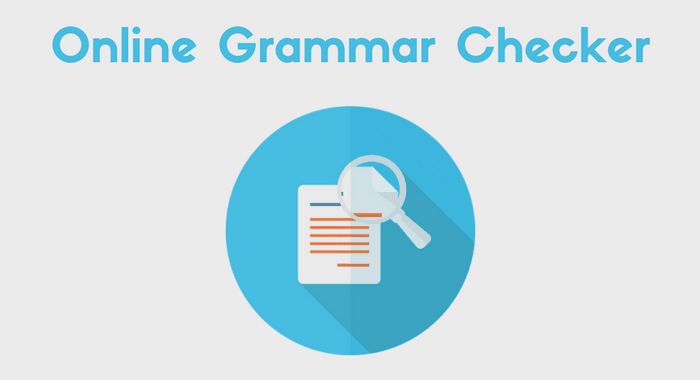Precision stands as the bedrock of effective communication in the ever-evolving landscape of technical writing. Precision in language ensures that intricate technical details are conveyed clearly and professionally. In this pursuit of perfection, grammar checker tools have emerged as indispensable aids, helping writers easily navigate the complexities of syntax and grammar.
Why Precision Matters in Technical Writing
Technical writing demands a level of precision that extends beyond mere grammatical correctness. The significance of precision is twofold: directly impacting the clarity of information and contributing to the overall professionalism of technical documents.
Impact on Clarity and Understanding
The hallmark of technical documents is their complexity, often laden with intricate details and specialized terminology. Precision in writing ensures that these details are presented in a manner that fosters understanding, eliminating any room for ambiguity or misinterpretation.
Professionalism in Technical Documents
Beyond ensuring understanding, precision in technical writing elevates the overall professionalism of documents. A well-crafted technical document free of grammatical errors reflects not only the expertise of the writer but also the commitment to delivering quality information.
Challenges in Maintaining Precision
While the need for precision is clear, technical writers encounter challenges unique to their field. These documents’ dense technical terminology and intricate syntax pose hurdles that demand specialized solutions.
Complex Technical Terminology
Technical writing often involves the use of industry-specific jargon. Navigating this terrain without stumbling on grammatical errors requires an in-depth understanding of both the language and the subject matter.
Syntax Intricacies
The syntax of technical language is intricate, and errors in structure can be subtle yet impactful. Writers may inadvertently introduce errors that escape the untrained eye, emphasizing the need for meticulous proofreading.
Overview of Grammar Checker Tools
Grammar checker tools, with their roots in basic spell-checkers, have evolved into sophisticated platforms that cater specifically to the nuanced needs of technical writers.
Definition and Purpose
At their core, grammar checker tools analyze written content to identify and correct grammatical errors, spelling mistakes, and issues related to syntax and punctuation. Their purpose is to assist writers in crafting documents that meet the highest standards of clarity and professionalism.
Evolution Over Time
The journey of grammar checker tools has been marked by continuous evolution. From rudimentary tools that flagged basic spelling errors, these platforms have transformed into comprehensive proofreading companions, offering a range of features to enhance the quality of writing.
Top Grammar Checker Tools for Technical Writing
Several grammar checker tools have risen to prominence in the realm of technical writing, each offering a unique set of features to aid writers in their quest for precision.
Grammarly
Widely regarded as a powerhouse in the grammar checking arena, Grammarly stands out for its accuracy and versatility. Its real-time suggestions, coupled with seamless integration with various writing platforms, make it a go-to tool for many technical writers.
ProWritingAid
Beyond traditional grammar checking, ProWritingAid delves into in-depth reports on writing style and structure. It provides valuable insights into readability, sentence structure, and overall document improvement, catering to writers who seek a more comprehensive analysis.
Hemingway Editor
Focusing on simplicity and clarity, the Hemingway Editor highlights complex sentences and suggests alternatives for improved readability. Its straightforward interface appeals to writers aiming for concise and effective communication.
Features Comparison
The choice of a grammar checker tool is a pivotal decision for technical writers. A thorough comparison of features helps writers align the tool with their specific requirements.
Accuracy
At the heart of any grammar checker tool is its accuracy in identifying and correcting technical nuances. Grammarly, with its robust algorithms, excels in providing precise suggestions tailored to the intricacies of technical language.
Integration Capabilities
Seamless integration with popular writing platforms such as Microsoft Word, Google Docs, and others is crucial for a writer’s workflow. Grammarly’s versatility in this aspect sets it apart, ensuring convenience in usage across various platforms.
Cost
While many grammar checker tools offer free versions, premium features often come at a cost. ProWritingAid and Hemingway Editor provide affordable premium plans, offering additional benefits for writers committed to maintaining high standards.
How Grammar Checker Tools Work
Understanding the mechanics behind grammar checker tools enhances the appreciation of their utility in technical writing.
Algorithms Behind the Tools
Grammar checker tools employ sophisticated algorithms that analyze text based on grammatical rules, language patterns, and contextual relevance. These algorithms have evolved to not only detect errors but also understand the context in which they occur.
Real-Time Suggestions and Corrections
The real-time nature of these tools ensures that writers receive immediate feedback, allowing for instant corrections and improvements during the writing process. This real-time functionality is a game-changer, enabling writers to address issues as they arise.
Benefits of Using Grammar Checker Tools in Technical Writing
The integration of grammar checker tools into the technical writing process yields numerous benefits, positively impacting both efficiency and the overall quality of writing.
Time-Saving
Automated error detection significantly reduces the time spent on online proofreading, allowing writers to focus more on content creation. The time saved can be channeled into refining the technical aspects of a document.
Enhanced Quality and Consistency
Consistent application of grammar rules throughout a document contributes to a polished and professional end product. Grammar checker tools ensure that the highest standards of quality and consistency are maintained, elevating the overall impact of technical writing.
Addressing Common Concerns
While grammar checker tools offer substantial advantages, addressing common concerns is crucial for maximizing their effectiveness.
False Positives
Some tools may flag correct usage as errors. Understanding the tool’s idiosyncrasies and customizing settings can mitigate false positives. Additionally, regular user feedback contributes to the refinement of these tools, reducing the occurrence of false positives over time.
Handling Specialized Terminology
Technical writing often involves industry-specific terms that may not be recognized by standard grammar checkers. Selecting a tool that allows customization for specialized vocabulary is essential for ensuring that the checks are aligned with the specific language of the industry.
User Testimonials
Real-world experiences from professionals highlight the tangible impact of grammar checker tools on their work.
Experiences of Professionals Using Grammar Checker Tools
Industry experts share anecdotes of increased efficiency, improved document quality, and enhanced client satisfaction resulting from the integration of grammar checker tools. These testimonials provide valuable insights into the practical benefits of using such tools in a professional setting.
Positive Impact on Their Work
The testimonials underscore how precision in technical writing, facilitated by grammar checker tools, positively influences the success of projects and the reputation of professionals. The firsthand accounts serve as testament to the transformative power of these tools in real-world scenarios.
Best Practices for Using Grammar Checker Tools
To maximize the benefits of grammar checker tools, writers should adopt certain best practices in their workflow.
Regular Proofreading Alongside Automated Tools
While grammar checker tools are valuable, manual proofreading remains essential. A combination of both ensures a comprehensive review of technical documents, addressing not only grammatical errors but also fine-tuning the overall flow and coherence of the content.
Customization for Industry-Specific Writing
Customizing the settings of grammar checker tools to align with industry-specific writing standards enhances their effectiveness in technical contexts. This customization ensures that the tools understand and adapt to the specialized language used in different technical fields.
Future Trends in Grammar Checking Technology
The continuous evolution of technology promises exciting advancements in grammar checking tools.
Artificial Intelligence Advancements
The integration of artificial intelligence (AI) into grammar checker tools is expected to revolutionize their capabilities. AI can enhance the tools’ understanding of context, allowing for more nuanced suggestions and corrections tailored to the specific requirements of technical writing.
Integration with Other Writing Tools
Future grammar checker tools may seamlessly integrate with other writing tools, creating a cohesive environment for writers to enhance their overall writing process. This integration could streamline workflows, providing a unified platform for various writing and editing tasks.
Choosing the Right Grammar Checker Tool for You
Selecting the most suitable grammar checker tool requires careful consideration of individual needs and preferences.
Consideration of Individual Needs
Understanding specific requirements, such as the need for in-depth style analysis or seamless integration with certain platforms, guides the selection process. Writers should evaluate their workflow and choose a tool that aligns with their unique writing habits and objectives.
Free vs. Premium Options
While free versions of grammar checker tools may offer basic features, premium options provide advanced capabilities. Writers should assess the value of premium features against their individual needs to determine if the investment is justified.
Case Study: Successful Implementation
A real-world case study exemplifies the positive outcomes of incorporating grammar checker tools into the technical writing workflow.
Company X’s Experience with Improved Documentation
The case study delves into the specific challenges faced by Company X in their technical documentation process. It explores how the implementation of grammar checker tools resulted in increased efficiency, improved document quality, and heightened client satisfaction.
Increased Efficiency and Client Satisfaction
The success story of Company X reinforces the notion that precision in technical writing, achieved through the use of grammar checker tools, has tangible benefits for both the organization and its clients. The improvements in efficiency and client satisfaction highlight the transformative impact of these tools on real-world business outcomes.
Conclusion
In the realm of technical writing, precision is not merely a stylistic choice; it is a prerequisite for success. Grammar checker tools have emerged as indispensable allies, providing writers with the means to navigate the intricate landscape of technical language. As technology continues to evolve, these tools will play an increasingly vital role in ensuring the highest standards of precision and professionalism in technical writing.
FAQs
Are grammar checker tools suitable for all types of technical writing?
Yes, grammar checker tools can be adapted to various technical writing styles and industries. Their flexibility allows them to cater to a wide range of writing needs.
How do grammar checker tools handle industry-specific terminology?
Many tools allow users to customize dictionaries, accommodating specialized vocabulary commonly found in different industries. This customization ensures that the tools understand and recognize industry-specific terms.
Can grammar checker tools replace manual proofreading entirely?
While highly efficient, a combination of automated tools and manual proofreading is recommended for a thorough review. Manual proofreading adds a human touch, addressing nuances that automated tools might overlook.
Do grammar checker tools work with collaborative writing platforms?
Yes, most tools seamlessly integrate with popular collaborative writing platforms, enhancing the collaborative writing experience for teams working on technical documents.
Is there a learning curve associated with using grammar checker tools?
Most tools have user-friendly interfaces, minimizing the learning curve for writers. However, it’s advisable to spend some time exploring the features to make the most of these tools effectively.








